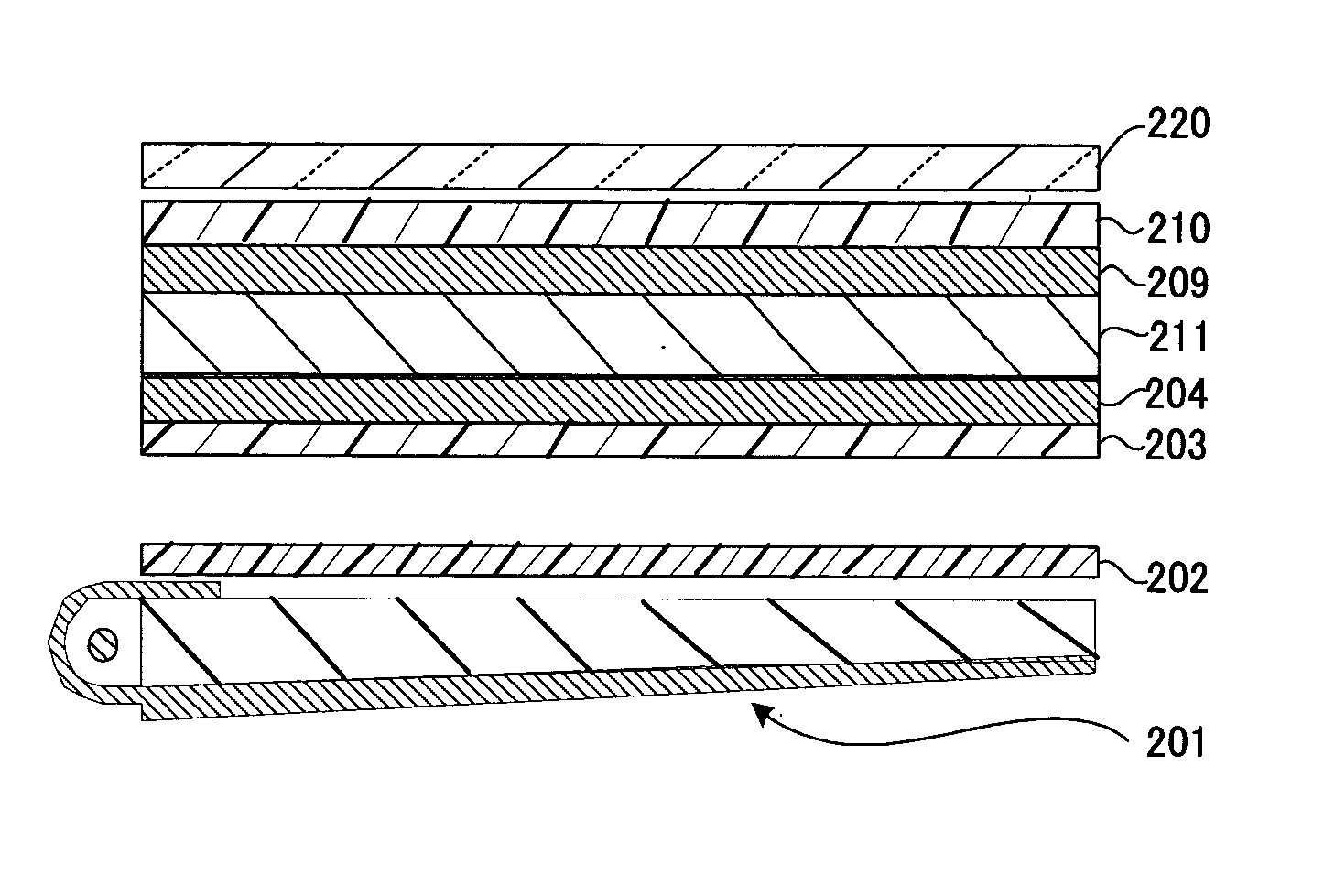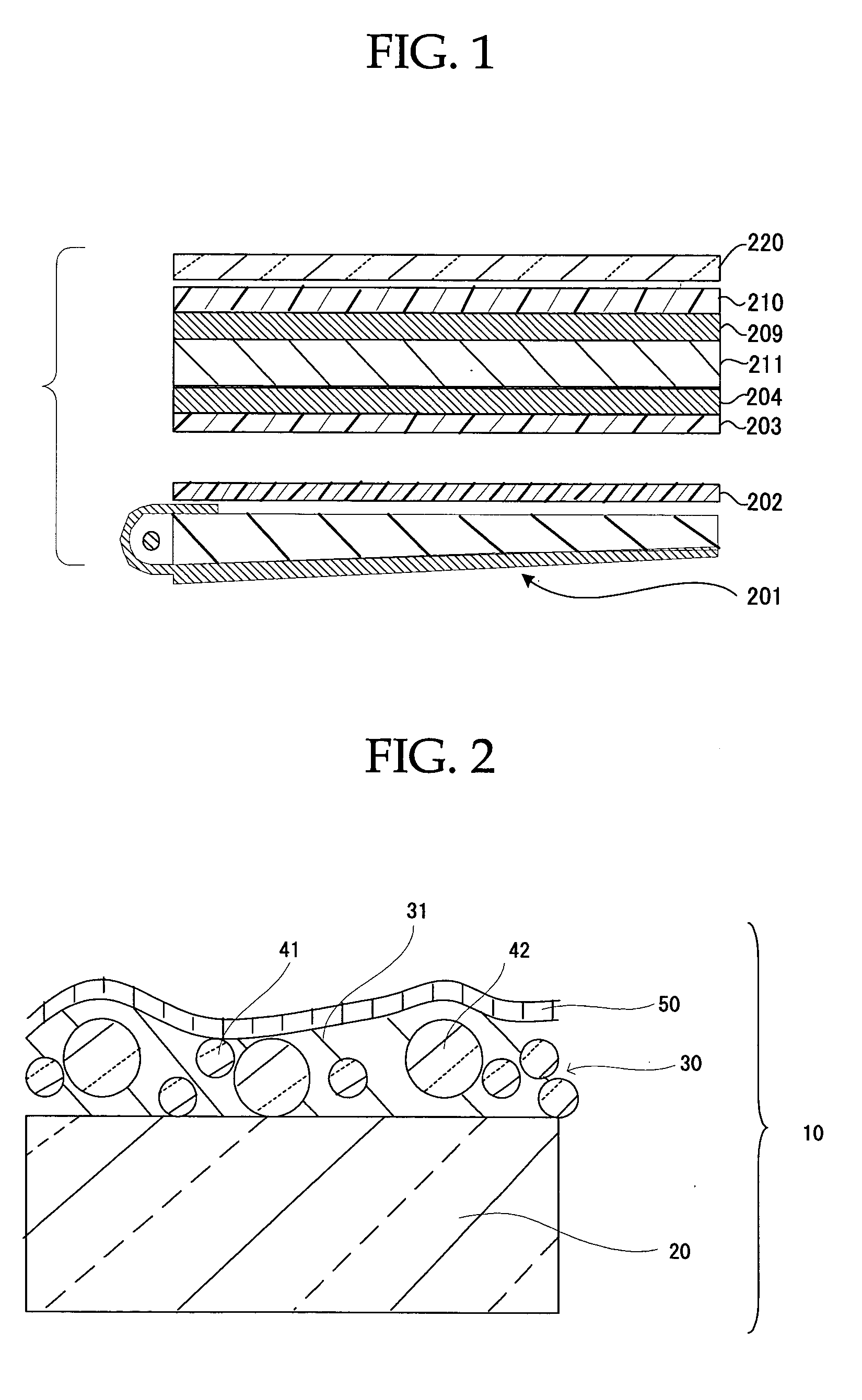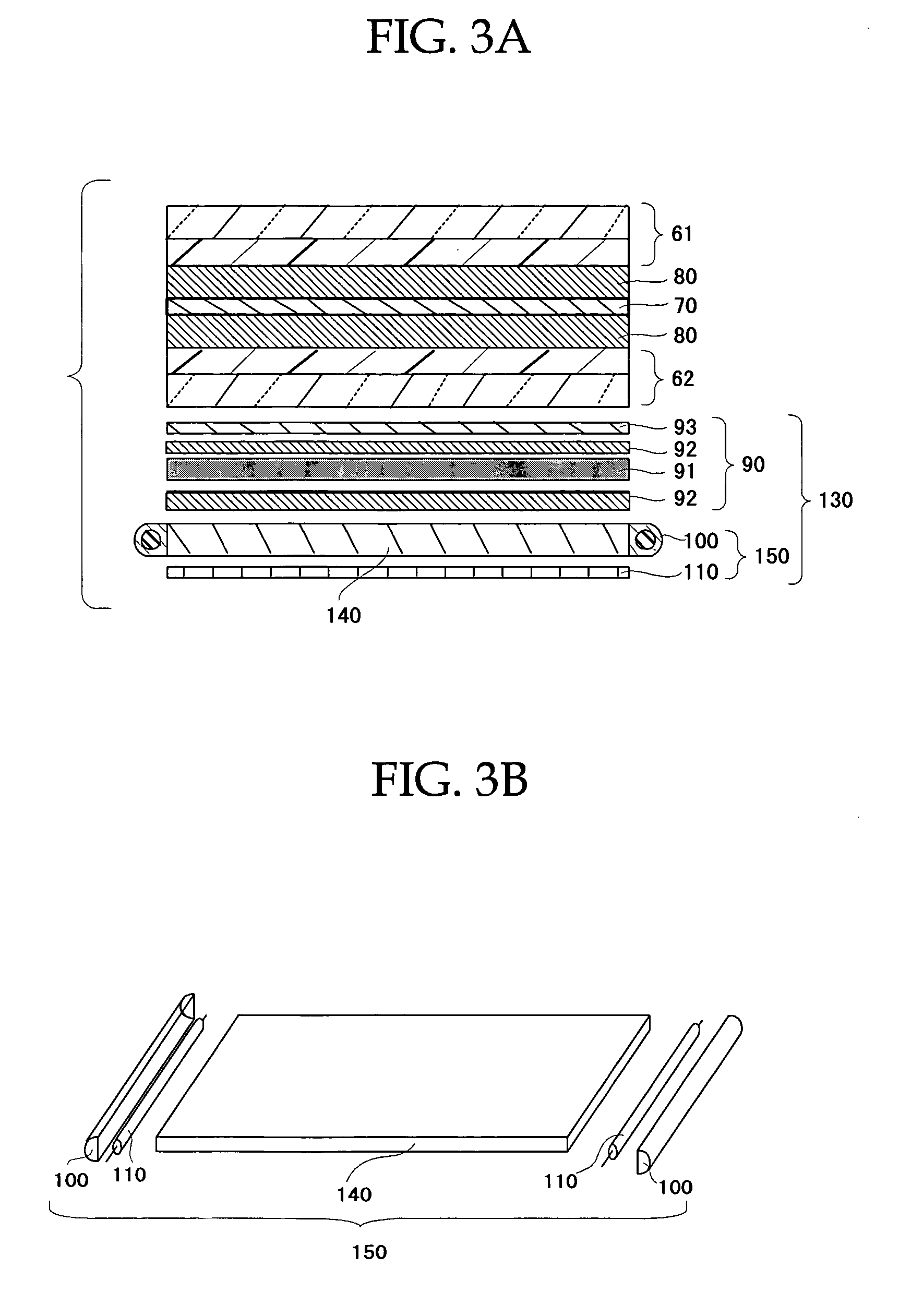Liquid crystal display
- Summary
- Abstract
- Description
- Claims
- Application Information
AI Technical Summary
Benefits of technology
Problems solved by technology
Method used
Image
Examples
example 1
Manufacture of Liquid Crystal Display
The pair of polarizing plates provided in the liquid crystal display (TH-14TA3, Matsushita Electric Industrial Co., Ltd.) using a TN type liquid crystal cell were peeled off, and instead, the visual recognition side polarizing plate (PB-02) on the observer side, and a backlight side polarizing plate on the backlight side, were respectively stuck via an adhesive so that the optical compensation film was on the liquid crystal cell side. The transmission axis of the polarizing plate on the observer side and the transmission axis of the polarizing plate on the backlight side were disposed in the 0 mode. “MFZ-2555” (LUMISTY, Sumitomo Chemical Co., Ltd.) as an anisotropic scattering film was also disposed between the backlight and liquid crystal cell so that its scattering anisotropy corresponded to the up / down direction of the liquid crystal display.
The construction of the liquid crystal display of Example 1 is shown in FIG. 8. In FIG. 8, 201 is ...
example 2
Manufacture of Liquid Crystal Display
The liquid crystal display of Example 2 was manufactured exactly as in Example 1, except that in Example 1, the visual recognition side polarizing plate (PB-02) was replaced by the visual recognition side polarizing plate (PA-02). The construction of the liquid crystal display of Example 2 is shown in FIG. 9. In FIG. 9, 201 is a back light unit, 202 is an anisotropic scattering film, 203 is a polarizing film, 204 is an optically anisotropic layer, 209 is an optically anisotropic layer, 210 is a polarizing film, 211 is a liquid crystal cell, and A-02 is an optical diffusion film, respectively.
example 3
Manufacture of Liquid Crystal Display
The liquid crystal display of Example 3 was manufactured exactly as in Example 1, except that in Example 1, the visual recognition side polarizing plate (PB-02) was replaced by the visual recognition side polarizing plate (PA-01).
The construction of the liquid crystal display of Example 3 is shown in FIG. 10. In FIG. 10, 201 is a back light unit, 202 is an anisotropic scattering film, 203 is a polarizing film, 204 is an optically anisotropic layer, 209 is an optically anisotropic layer, 210 is a polarizing film, 211 is a liquid crystal cell, and A-01 is an optical diffusion film, respectively.
PUM
 Login to View More
Login to View More Abstract
Description
Claims
Application Information
 Login to View More
Login to View More - R&D
- Intellectual Property
- Life Sciences
- Materials
- Tech Scout
- Unparalleled Data Quality
- Higher Quality Content
- 60% Fewer Hallucinations
Browse by: Latest US Patents, China's latest patents, Technical Efficacy Thesaurus, Application Domain, Technology Topic, Popular Technical Reports.
© 2025 PatSnap. All rights reserved.Legal|Privacy policy|Modern Slavery Act Transparency Statement|Sitemap|About US| Contact US: help@patsnap.com



